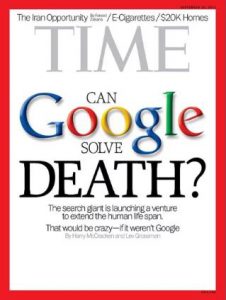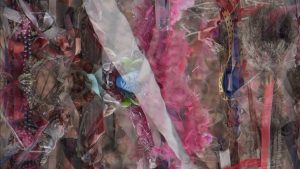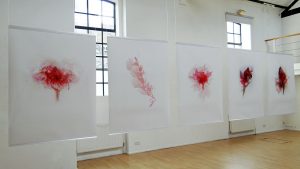LIFE’S ILLUSIONS
(Labelled glass bottles)
Buddhism, like other Indian religions, asserts that everything is impermanent and Buddhists say that our perception of reality is an illusion. This work, entitled Life’s Illusions, from the Joni Mitchell song, incorporates some of the names for the Water of Life or Elixir of Life which is said to give eternal life or eternal youth. Many people over the centuries, such as Arab and Far Eastern sages, the Ancient Greeks and Alchemists, have pursued the Elixir of Life.
1. Pursuit of the Elixir of Life or immortality
2. Current research of this pursuit
3. About Susan’s recent work
From Wikipedia:
The Elixir has had hundreds of names (one scholar of Chinese history reportedly found over 1,000 names for it), among them Amrit Ras or Amrita, Aab-i-Hayat, Maha Ras, Aab-Haiwan, Dancing Water, Chasma-i-Kausar, Mansarover or the Pool of Nectar, Philosopher’s stone, and Soma Ras. The word elixir was not used until the 7th century AD and derives from the Arabic name for miracle substances, al iksir. Some view it as a metaphor for the spirit of God, eg Jesus’s reference to the ‘Water of Life’ or the ‘Fountain of Life’: ‘But whoever drinks the water I give him will never thirst. Indeed, the water I give him will become in him a spring of water welling up to eternal life.’ (John 4:14) The Scots and the Irish adopted the name for their ‘liquid gold’: the Gaelic name for whiskey is uisce beatha or ‘water of life’.
Aab-i-Hayat is Persian and means ‘water of life’. Chashma-i-Kausar is the ‘Fountain of Bounty’, which Muslims believe to be located in Paradise. As for the Indian names, Amrit Ras means ‘immortality juice’, Maha Ras means ‘great juice’, and Soma Ras means ‘juice of Soma’.
Soma is a Vedic ritual drink… it is mentioned in the Rigveda (wherein) drinking soma produces immortality (and) Indra and Agni are portrayed as consuming soma in copious quantities. The consumption of soma by human beings is well attested in Vedic ritual. (The poets of the Rigveda are said to have drunk Soma to induce their visions as they wrote.) It is described as being prepared by extracting the juice from a plant, the identity of which is now unknown and debated among scholars.
In the ancient Greek myths, ambrosia (Greek: ἀμβροσία,”immortality”) is sometimes the food or drink of the Greek gods, often depicted as conferring longevity or immortality upon whoever consumed it
Many European recipes specified that the elixir was to be stored in clocks to amplify the effects of immortality on the user.
Some of the languages used for the labels are Sanskrit, Hindi, Telegu, Punjabi, Tamil, Bangla, Arabic, Persian, Traditional Cantonese, Ancient Greek and Latin.

Calico is a research and development biotech company founded in 2013 by Bill Maris and backed by Google with the goal of combating aging and associated diseases. (Wikipedia)
The company’s mission: to build a Bell Labs of aging research. It hoped to extend the human life span by coming up with a breakthrough as important, and as useful to humanity, as the transistor has been. (Technologyreview.com)
Maris says, ‘If you ask me today, is it possible to live to be 500, the answer is yes.’ Maris explained that in the fight against death, ‘We aren’t trying to gain a few years. We are trying to win the game.’ (Harari, Homo Deus)
The Google founders aren’t the first billionaires to decide that aging is the, ‘most fundamental unsolved problem in biology,’ as Calico’s press releases put it. Larry Ellison, the cofounder of Oracle, gave away $335 million to scientists studying aging before redirecting his foundation’s grants toward eliminating polio in 2013. The investor Peter Thiel has also donated to the anti-aging cause, and there’s even a $500,000 Palo Alto Longevity Prize to anyone who can radically extend the life of a mammal. (Technologyreview.com)
And there’s an anti-aging pill:
Within a couple hours, the NAD+ levels in the mice had risen significantly. In about a week, signs of aging in the tissue and muscles of the older mice reversed to the point that researchers could no longer tell the difference between the tissues of a 2-year-old mouse and those of a 4-month-old one…Now scientists are trying to achieve similar results in humans. (time.com)
This is from just dipping into the internet but there’s sure to be lots more going on.

Susan works in installation, sculpture, video and photography. Much of it has circled around the concept of ‘societies who lived in harmony with – rather than at the expense of – nature’ (from Lyall Watson, Lightning Bird). These are hunter-gatherer societies that have been unchanged for over 99% of existence of humanity and they have been symbolised in her work by offerings.

Life’s Illusions made especially for Nothing Endures but Change breaks away from this for the first time in some years and replaces offerings with the illusional ‘miracle substance’ but perhaps it isn’t so different than some of the extremes of offerings. One example stands out – will burning Joss paper money in Hong Kong provide servants, cars and credit cards for the dead?

Susan’s recent work, pictured above, includes a video, Outcasts’ Graveyard, of an active shrine to the ‘outcast dead’ near London Bridge thought to be the burial ground for medieval prostitutes and which held the remains of an estimated 15,000 paupers; a series of photographs entitled A Pocketful of Posies made from bits of litter that Susan had picked up in the street and put in her pocket and trees that she has exhibited hung with rags, ribbons and rolled-up paper, inspired by a shrine to the Hindu Goddess, Durga.
Susan regularly works with recycled materials and this is key to acknowledging the gulf between the world of hunter-gatherers (who being mobile can’t carry much with them) and the destructive course of acquisitive consumerism that we have set ourselves on.
